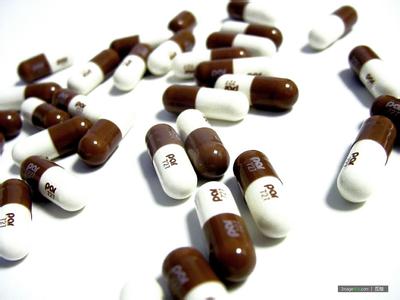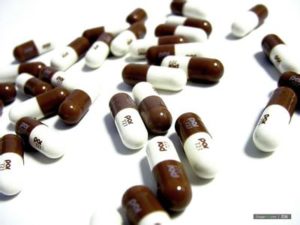Healthcare market in China
A behavioural change which lead to the growth of Healthcare market in China
China’s healthcare development is far slower than China’s economic growth. In 2010, China’s health expenditure accounted for 5.1% of overall GDP, while the world’s average was 6.4% and the developed countries’ average is up to 8%. China ranked 149 in the world. However, China’s health expenditure has a 17.6% average growth rate in the past 30 years, and consultant forecast predict an increase of nearly 13 in health expenditure per person within the next 5 years.
There are multiple reasons for this growth :
First, Macro-economy’s growth leads to people’s income increase. Meanwhile, fast economy development changes people’s life style, especially eating habits. Nowadays, people are suffering with malignant tumor, cardiovascular and cerebrovascular diseases, mental disorders,nutrition metabolism and endocrine system diseases, which cause incredibly high death rate. More and more people start to care about their health issues.
Second, the increase in urbanization lets more people joining the social insurance system. At the same time, because of birth control policy, China’s population is aging, which is a sign for the tendency of less labor in the future. China’s fast growth speed will slow down, and living condition and longer life are becoming more important.
Third, government investments on social insurance and healthcare services stimulate people’s healthcare expenditure.
However, while the total output growth of healthcare market in 2012 has increased to 21.3%, the revenue growth is “only” 16.23%. There are seven major sub industries of healthcare: API, Chemicals, Biotech, Devices, Materials, Chinese medicine, and Decoction pieces. Most of them are suffering a growth drop in recent years.
Structure of the Healtcare market in China
China healthcare industry is quite complex. There are three major markets in the industry: service factor market, service market, and financing market. Service factor market contains four factors: human resource supply and demand, medicine supply and demand, equipment supply and demand, and material supply and demand. Service market is about healthcare service supply and demand, plus the social insurance and commercial insurance. Government spending, social outcome, residents’ expenditure, and insurance are included into the financing market system.
In terms of the market chain, the basic stream is from manufacturers to wholesalers and retailers (hospitals and drugstores), and ends at patients. Insurance is involved in the ending part of the chain. In process of manufacturing, there are material suppliers and middle producers sharing the cake. 420,000 drugstores are distributed over all the provinces in China. Guangdong, Sichuan, Shandong, Jiangsu, and Hunan possess 38.8% of the whole number. The growth rate of drugstores experienced a trough starting from 2009, and it went back to 6.16% in 2011.
Local healthcare service is an important part of the market, especially in drug use. Since the 2008 reformation of rural healthcare service, the growth rate is going smoothly. County level of medicine use was 66%, which was the largest portion in the market in 2012. Even though Local Community Health Centre’s average charge is 81.5 RMB and County Hospital’s average is 49.5 RMB, the visits are increasing. In 2011, there were 3.8 billion visits to local health institutions, and it was 60.7% of the total visits. Moreover, Hospitalization was 37.75 million, which held 25% of the total number. 2012 Drug market capital was 1075 billion RMB, and hospital terminals took the largest share 72.1%. In the 774.6 billion RMB hospital terminal capitals, 59% was urban hospitals.
Opportunities & Challenges in the China’s Healthcare market
With the recovery of the economy from the financial crisis, government investments are increasing in healthcare industry. Base propellant expansion and designated production are new changes. Chen Zhu said at the national health conference on January 1st, 2013, that “new version of base propellants have approved to pass”. New policy requires that first-tier health institutes need to equip with base propellant; Second-tier hospitals’ base propellant usage and sales should reach 40%-50%, and third-tier hospitals’ base propellant usage and sales should reach 25%-30%.
Bidding mechanism is also a major change in the process. Main points are:
- Improve drug quality evaluation system, and figure out an efficient way to lower price.
- Expand purchase area, put high quality and price materials into purchasing list to realize centralized purchase.
- Centralize essential and non-essential drugs purchasing.
Three big changes are valuable:
- Focus more on innovation and patent protection instead of old-style platform building.
- Quality and price oriented method is replacing the price lowering strategy.
- Consider more about purchasing contract and usage instead of drug bidding.
Encouraging innovation on Chinese medicine and generic drugs shows patent protection and market selection. Promotions of the new version of GMP implementation will higher the standard of market entrance. It turns out that new GMP pass rate is about 15%. There are only 597 enterprises which got approvals from new GMP. The market is expecting GMP will bring more M&As.
There are also challenges together with these changes. Shrinking external demand will cause high pressure on costs. Meanwhile, new policy will test government and related departments’ determination and action.
Growth of healthcare fee and hospitalization fee is continuously under control, and is dropping sharply since 2008. It requires that growth rate of visit fee and hospitalization fee shouldn’t be higher than local growth rate of GDP (8%), even though the rate is already falling. It also asks that hospitalization fee should be based on insurance payment type.
The category of generic drugs is updated (Low, Regular, and High). Based on consistencies and function, government strongly supports the high quality generics. Within the next four years, China is going to finish 570 types of drugs evaluation, with 33 thousand approvals and 2400 generics consistencies.
Drug price control is another challenge. There is already a ceiling put for drug’s profit margin, and the 31st control has successfully lower the average price by 15%, including high price drugs’ price drop of 20%. The government will also put more efforts on supervising costs and finished goods price margin.
Future Trends in China’s healthcare market
With a higher technology, new medicines are focusing more on disease prevention. Hierarchy of population has been changed; aging population is forcing the structure of healthcare market change. Furthermore, chronic diseases are taking over the major factors of death. Under the trend of urbanization, huge potential of new rural cooperative medical system is coming out.
Write by Amy Wang for Daxue Consulting China
To know more on healthcare in China
Source : McKinsey / KPMG / Forbes

















